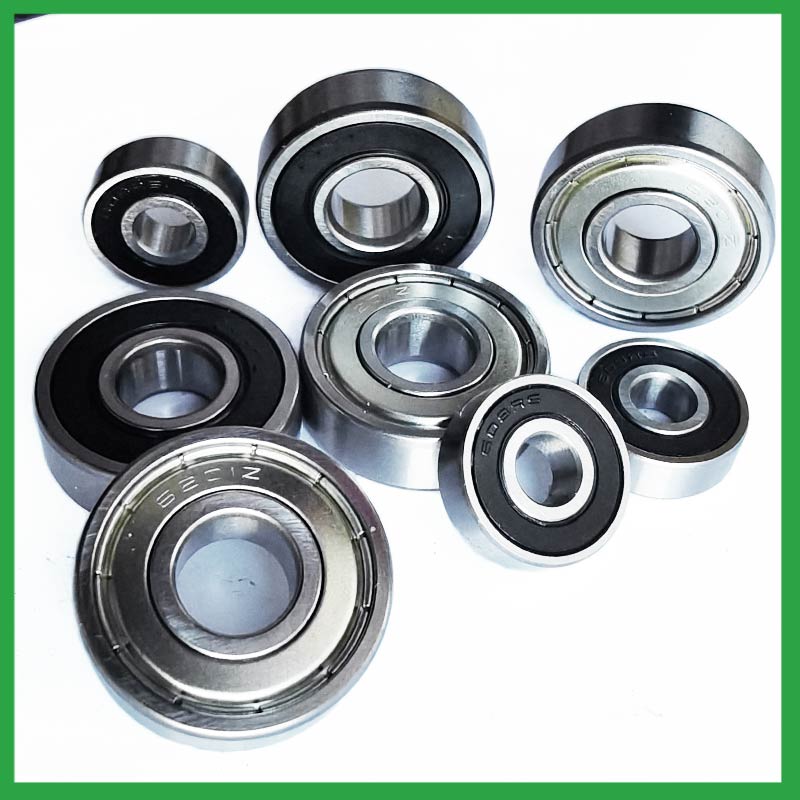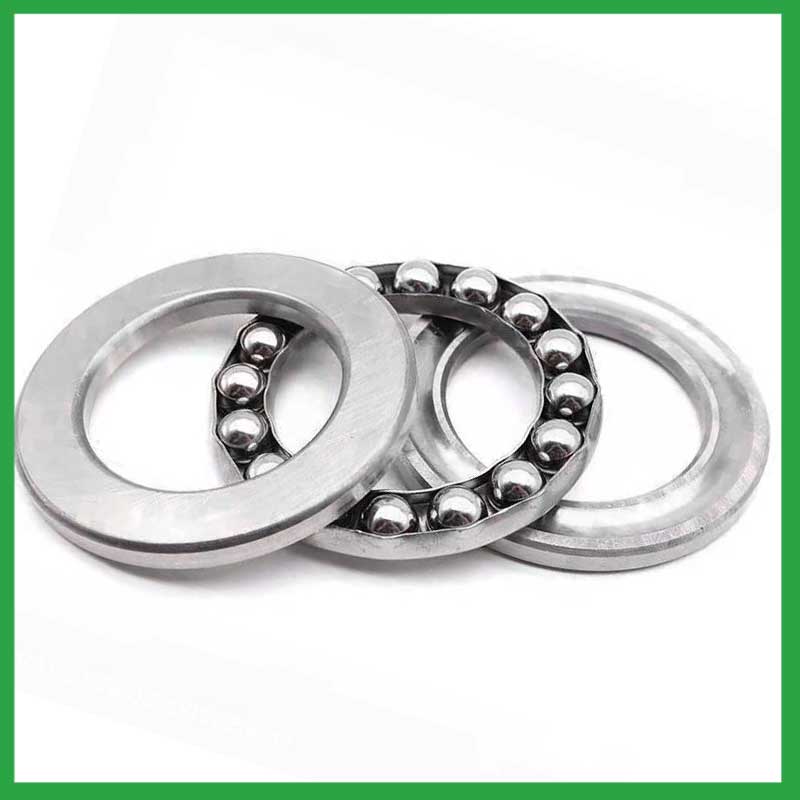PRODUCTS
CONTACT US
Ningbo Nide International Co., Ltd.
一一
· Contact person:Jack Zeng
· Mob/Whatspp/WeChat:0086-13738869026
· Email:emarketing@nide-group.com;marketing4@nide-group.com
· Add:No. 169, Wohushan Road, Daqi Subdistrict, Beilun District, Ningbo, China

Nide team could manufacture ball bearing as per customer’s drawing and samples.
If customer only has samples, we could also design drawing fo r our customer.
We also provide customized service.
Our ball bearing is widely applied the different industrials.
Established in 2010, Ningbo Haishu Nide International is a company devoted in the field of electric motors manufacturing, providing one-stop service for its customers. Nide has three main business divisions. The first division is to provide different kinds of motor manufacturing machinery, including stand along machine, fully-auto complete line for armature and stator production, and the motor assembly line. The second division is to supply the full range of magnet,thermal protector,motor cover and lamination,ball bearing,insulation paper,commutator,etc. The third division is to provide technical support and consulting, project support and turn-key service for some motor manufacturing.

| Parameter | Information |
|---|---|
| Product Name | ball bearing idler pulley |
| Brand Name | NIDE |
| Place of Origin | Ningbo,China |
| Material | stainless steel, etc. |
| Structure | Deep Groove |
| Color | Customized Color |
| Delivery Time | 5-7days |
| Port | Ningbo/Shanghai |
| Export region | Africa,Europe,America |
| Export Country | India,Brazil,South Korea,Norway,Czech Republic,Australia,Palau...etc |
| Application | small rotary motors,fan electric motor, etc. |
| OEM/ODM | Support |
| Size | Customized size |
| Stock | In Stock |
| Feature | Low Noise,Good wear resistance...etc |
| MOQ | 10 pieeces(Specific according to the model) |
| Certification | ISO9001,CE-insulation paper inserting machine,CE-stator coil winding machine,etc |
| Supply Ability | 100000-500000 Piece/Pieces per Month |
| Lubricate | Oil Grease |
| Packaging Details | Suitable for sea transportation |
| Lead time (days) | 15-20 (To be negotiated) |
Please note: The above table data is for reference only. For specific information, please contact us.
ball bearing idler pulley have the advantages of lightweight,low friction coefficient,high efficiency, and high load, and are used in main motion mechanisms and components, such as tires,resistors,motors,transmission shafts, different motion mechanisms and accessories of airplanes and motorcycles.
Before use, the model, size, and design of the ball bearing should be confirmed to ensure suitable application;
During installation, the installation load of the ball bearing should be minimized as much as possible to avoid unnecessary damage;
The bearing shaft and the bearing frame should be stable at the same time to avoid excessive tension.
Ball bearings have many advantages, making them highly competitive in the market.
Firstly, they are very durable and have good wear performance, making their service life longer than many other types of bearings.
Secondly, they are easy to install and can provide low friction performance in various applications.
Thirdly, they require a relatively low level of maintenance, making them cost-effective.
In addition, compared to many other types of bearings, their purchase cost is relatively low, making them an economical choice.




ball bearing idler pulley---FAQs Guide
2.What are the common materials used in ball bearing idler pulley manufacturing?
3.Can ball bearing idler pulley be used in both vertical and horizontal orientations?
4.How do different ball bearing idler pulley designs, such as deep groove, angular contact, or thrust bearings, cater to specific applications?
5.What is the role of ball bearing idler pulley in reducing friction and energy loss in rotating machinery?
6.Where can ball bearing idler pulley be used?
7.About ball bearing idler pulley,Can I add my own logo?
8.What are the considerations for choosing between open, shielded, or sealed ball bearing idler pulley in specific applications?
9.How do sealed ball bearing idler pulley prevent the ingress of contaminants and extend the bearing's service life?
10.How do preloaded ball bearing idler pulley enhance rigidity and reduce clearance in high-precision applications?
11.What is the typical noise level associated with ball bearing idler pulley, and how are noise-reduction techniques applied?
1.About ball bearing idler pulley,What about the lead time?
3-7 days for samples, 3-4 weeks for mass production.
2.What are the common materials used in ball bearing idler pulley manufacturing?
Most ball bearing idler pulley are made of a type of steel known as high carbon chromium steel, often called chrome steel. This is used for reasons of cost and durability. Bearings are also made from other materials such as stainless steel, ceramics and plastic.

3.Can ball bearing idler pulley be used in both vertical and horizontal orientations?
Sleeve Bearings: Sleeve bearings, also known as plain bearings, employ a simple yet effective mechanism. A cylindrical sleeve separates the rotating shaft from the stationary portion of the bearing, reducing friction and enabling smooth rotation. Sleeve bearings are characterized by their quiet operation, cost-effectiveness, and suitability for horizontal mounting orientations.
Ball Bearings: Ball bearings introduce small metal balls between the moving parts, providing enhanced durability and reduced friction. This design allows for smoother and more efficient rotation, making ball bearings well-suited for high-performance applications and vertical installations.
4.How do different ball bearing idler pulley designs, such as deep groove, angular contact, or thrust bearings, cater to specific applications?
Deep groove ball bearing idler pulley: Deep groove ball bearings are the most common type. They can handle both radial and axial loads. Angular contact ball bearings: Angular contact ball bearings have higher than average internal axial clearance. They can handle axial loads in one direction and moderate radial loads.

5.What is the role of ball bearing idler pulley in reducing friction and energy loss in rotating machinery?
ball bearing idler pulley reduce friction by using smooth balls lubricated with oil or grease that freely roll between a smooth inner and outer surface. The main concept of the ball bearing is that objects that roll past each other produce less friction than if the objects were sliding against each other.
6.Where can ball bearing idler pulley be used?
ball bearing idler pulley are very versatile. They can be designed to withstand radial loads, axial loads and combined radial/axial loads at various operating speeds. These characteristics, combined with the relative cost and compactness of the design, give it universal appeal within the industry. Ball bearings are widely used in electric motors, gear reducers and pumps. Serving the automotive, home appliances, aerospace, oil and gas drilling, and mining sectors.

7.About ball bearing idler pulley,Can I add my own logo?
Yes, you can add your logo on bearings and packing box. We supply OEM SERVICE including bearing's size, logo, packing, etc.
8.What are the considerations for choosing between open, shielded, or sealed ball bearing idler pulley in specific applications?
While sealed bearings offer superior protection and maintenance advantages, shielded ball bearing idler pulley can be more suitable in situations where minimal friction and operating temperature are crucial. It's essential to assess the operational environment and demands before making a selection.

9.How do sealed ball bearing idler pulley prevent the ingress of contaminants and extend the bearing's service life?
Contact seals are a type of seal where the sealing lip physically touches the inner raceway of the ball bearing idler pulley. They create a narrow line or zone of contact that forms a barrier to prevent the escape of lubricants and the ingress of contaminants. Because the seal keeps dirt and other contaminants out, it can offer a longer operating life of the bearing or prevent premature bearing failure. Sealed bearings can be considered lubricated for life, which eliminates the need for a relubrication process.
10.How do preloaded ball bearing idler pulley enhance rigidity and reduce clearance in high-precision applications?
Enhance Rigidity: By applying a controlled axial force, preload increases the bearing's resistance to external forces and moments. This heightened rigidity is essential in applications where any deflection or misalignment must be minimized, such as in machine tools or robotic systems.

11.What is the typical noise level associated with ball bearing idler pulley, and how are noise-reduction techniques applied?
To measure in accurate way the ball bearing idler pulley noise under rotation during their manufacturing process is a key activity particularly in the production of medium, small and ultra-small deep groove ball bearings. This capability in bearings noise analysis has become the real distinguishing element between a standard bearings noise equipment and a superior class one.
The various types of vibration and sound in rolling bearings can be grouped in four main categories: structural, manufacturing, handling and other. The structural vibration consists mostly of race, click, squeal and cage noise: it can be continuous or intermittent depending on specific cases. The manufacturing vibration is instead related to the waviness noise generated by the geometrical imperfections of inner and outer ring and of rolling elements, being always continuous in nature. The so-called handling vibration is normally associated with flaw and contamination and is generating – in most of the cases – irregular noise. Then there are other types of vibrabition that include noise generated by sealing and lubricant (irregular) or by runout (continuous).

